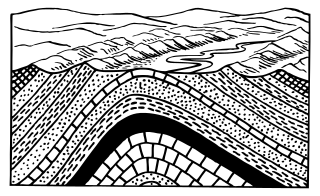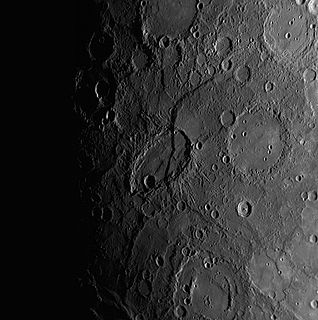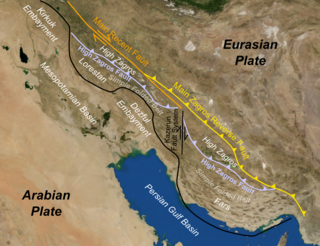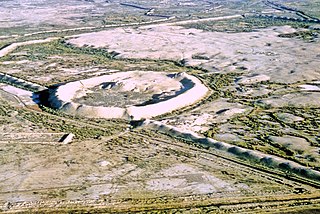Geology
The Tehran Plain is a landscape formation in Iran. It consists of Neogene and Quaternary sediments. [1]
The Neogene is a geologic period and system that spans 20.45 million years from the end of the Paleogene Period 23.03 million years ago (Mya) to the beginning of the present Quaternary Period 2.58 Mya. The Neogene is sub-divided into two epochs, the earlier Miocene and the later Pliocene. Some geologists assert that the Neogene cannot be clearly delineated from the modern geological period, the Quaternary. The term "Neogene" was coined in 1853 by the Austrian palaeontologist Moritz Hörnes (1815–1868).
The North Tehran Fault thrust up Eocene rocks of the Alborz Mountain range. Geomorphologically three different zones can be described: [1] In the western part, the plain has been deformed by thrusting, as can be seen by a segmented and internally deformed anticline and old and diverted channels on both sides. This process has been dated at possibly after 25,000 years. In the central part of the plain, which lies below the megacity of Tehran, thrusting and left-lateral strike-slip faulting has caused several uplifted fluvial terraces, reminiscent of a transpressional structure of uncertain age, possibly ~195,000 years, i.e. Pleistocene.
The Eocene Epoch, lasting from 56 to 33.9 million years ago, is a major division of the geologic timescale and the second epoch of the Paleogene Period in the Cenozoic Era. The Eocene spans the time from the end of the Paleocene Epoch to the beginning of the Oligocene Epoch. The start of the Eocene is marked by a brief period in which the concentration of the carbon isotope 13C in the atmosphere was exceptionally low in comparison with the more common isotope 12C. The end is set at a major extinction event called the Grande Coupure or the Eocene–Oligocene extinction event, which may be related to the impact of one or more large bolides in Siberia and in what is now Chesapeake Bay. As with other geologic periods, the strata that define the start and end of the epoch are well identified, though their exact dates are slightly uncertain.

In structural geology, an anticline is a type of fold that is an arch-like shape and has its oldest beds at its core. A typical anticline is convex up in which the hinge or crest is the location where the curvature is greatest, and the limbs are the sides of the fold that dip away from the hinge. Anticlines can be recognized and differentiated from antiforms by a sequence of rock layers that become progressively older toward the center of the fold. Therefore, if age relationships between various rock strata are unknown, the term antiform should be used.

A megacity is a very large city, typically with a population in excess of 10 million people. Precise definitions vary: the United Nations Department of Economic and Social Affairs in its 2014 "World Urbanization Prospects" report counted urban agglomerations having over 10 million inhabitants. A University of Bonn report held that they are "usually defined as metropolitan areas with a total population of 10 million or more people". Others list cities satisfying criteria of either 5 or 8 million and also have a population density of 2,000 per square kilometre. A megacity can be a single metropolitan area or two or more metropolitan areas that converge. The terms conurbation, metropolis, and metroplex are also applied to the latter. The term metacity has been used to describe metropolitan conurbations containing over 20 million people.
In the Eastern part, ramp-structures are ~195,000y-old, of middle Pleistocene [1]
The Middle Pleistocene is a subdivision of the Pleistocene Epoch, from 781,000 to 126,000 years ago. It is preceded by the Calabrian stage, beginning with the Brunhes–Matuyama reversal, and succeeded by the Tarantian stage, taken as beginning with the last interglacial.












